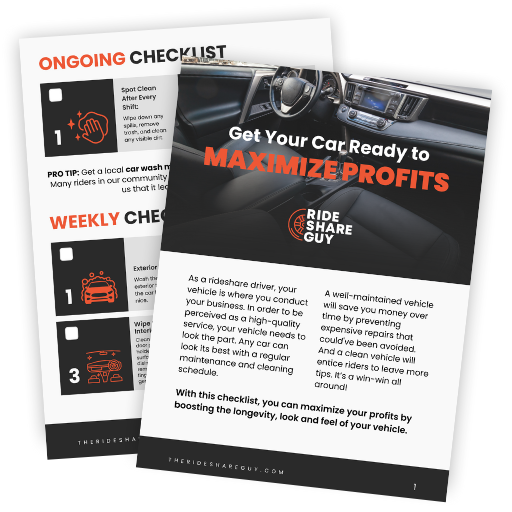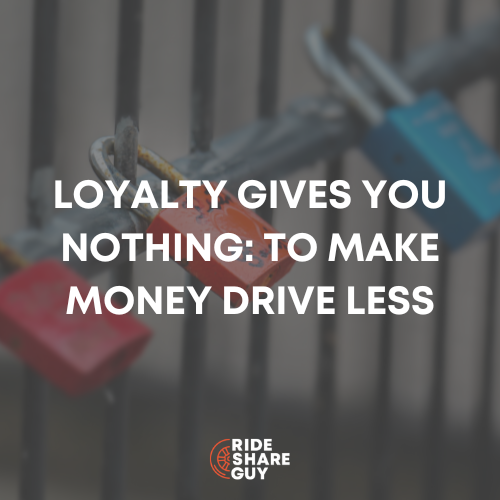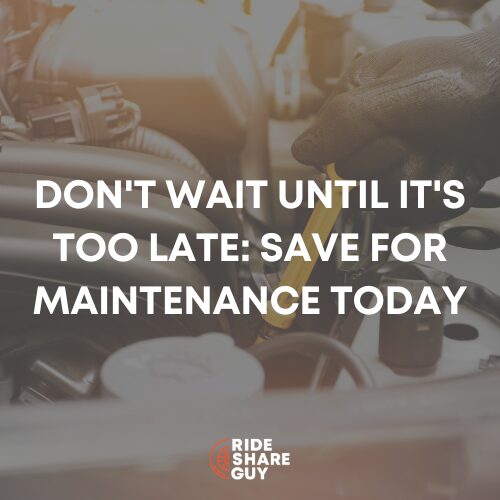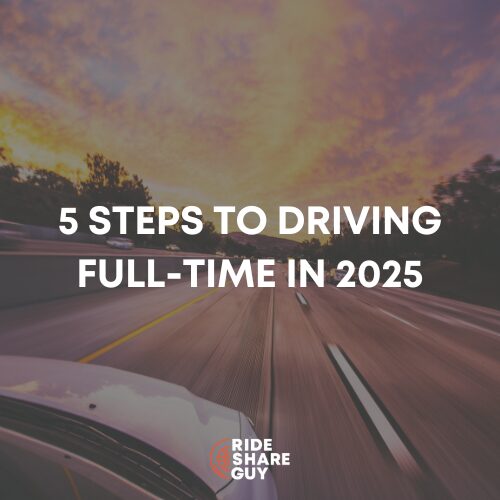As the new year begins, it is the perfect time to reassess and plan your rideshare strategy for 2025.
After a decade of driving for Uber and Lyft and nearly 32,000 rides, I have learned that a solid plan can make all the difference. Whether you are a full-time driver or supplementing your income part-time, a clear plan helps you stay focused and productive.
Success in rideshare driving is not about working harder but working smarter. By tailoring your driving plan to your unique goals, you can achieve financial stability, maintain work-life balance, and avoid burnout.

Background
Rideshare driving has evolved significantly over the years.
The market is more saturated, competition is fierce, and drivers must be strategic to succeed. Gone are the days of logging in and earning steadily throughout the day. A thoughtful approach is crucial with more drivers on the road and fluctuating demand.
My experience as a seasoned driver has shown that stepping back, reflecting on your goals, and making adjustments is essential for long-term sustainability.
Developing a driving plan is not just about maximizing income; it’s about ensuring you can sustain this work while aligning it with your broader life priorities.
How Much Do You Want to Drive?
The first step in creating a driving plan is deciding whether to drive full-time or part-time.
For 2025, I have chosen to drive part-time. I decided based on my goal of maintaining a healthier work-life balance while pursuing other interests. Driving part-time can also be an excellent option for those with family responsibilities, different jobs, or personal goals outside rideshare driving.
Reducing driving hours allows you to maintain energy, focus during your shifts, and be more strategic about when and where you work.
For instance, part-time driving lets you focus on peak demand times, such as weekends or holidays, when earnings are typically higher. Ultimately, your driving time should align with your income goals and lifestyle.

What Months Will You Drive?
Planning your driving schedule around your calendar and seasonal trends can make a significant difference.
In 2025, I will only drive for five months before beginning an extended stay in Thailand in June. This timeline allows me to concentrate my efforts during the year’s first half and ensure that I meet my financial targets before making this significant life change.
For other drivers, this may mean considering seasonal fluctuations in demand.
For example, the winter holiday often brings higher demand due to shopping, travel, and social events. Conversely, demand may drop during slower months like January or September.
By understanding these trends and coordinating your schedule accordingly, you can maximize your earnings during the months you choose to work.
What Days and Hours Will You Drive?
Consistency and efficiency are key to making the most of your driving hours.
For 2025, I will focus on weekends, eight hours on Saturdays, and four hours on Sundays. This schedule provides a predictable routine while minimizing the risk of burnout.
Weekend driving is particularly lucrative, as more riders are out for leisure activities, events, and social gatherings.
You must identify high-demand periods in your local market when creating your schedule. Due to commuter traffic, weekday mornings or evenings may be ideal for some drivers.
Others may find success during late-night hours catering to the nightlife crowd. I prefer early mornings when traffic is light, and few other drivers are on the road. A few crazies like me want to start driving at 3 AM.
Stick to your schedule consistently to develop a reliable routine and predictable income.

What Is Your Income Goal?
Setting a clear financial target is a crucial part of any driving plan.
My goal for 2025 is to earn $6,000 over 20 weekends, averaging $300 per weekend. This income will help support my short-term goals before my relocation. Having a specific number in mind provides motivation and focus, making it easier to track progress and adjust if needed.
Break it down into smaller, manageable targets to achieve your income goal.
For example, if you aim to earn $300 per weekend, consider how many rides or hours it typically takes to reach that amount. At a minimum hourly rate of $25 per hour (after fuel is deducted), I need to schedule 12 hours.
Adjust your strategy based on your results. If you fall short one weekend, you can plan to drive extra hours or take advantage of promotions the next. A clear income goal ensures that you stay on track and maintain accountability.
What Car Will You Drive?
The choice of vehicle plays a significant role in your profitability as a rideshare driver.
For 2025, I will continue using my vehicle as a part-time driver. Passengers enjoy my 2017 Honda Accord Hybrid. It is a delightful car with a spectacular sound system and low road noise. This approach keeps costs low, as I am familiar with my car’s maintenance needs and fuel efficiency.
However, full-time drivers may benefit from renting or leasing a vehicle specifically for ridesharing.

When selecting a car, consider fuel economy, reliability, and maintenance costs. Hybrid or electric vehicles are increasingly popular among drivers due to their lower operating costs.
Additionally, some rideshare platforms offer rental programs with incentives for frequent drivers. Weigh the pros and cons of each option based on your driving schedule and financial goals. If I were to go full-time, I would consider renting a Tesla through Uber.
Strategize for Efficiency
Efficiency is critical to maximizing earnings and minimizing stress.
One way to do this is by focusing on high-demand areas and times. Use your rideshare app’s heat maps and surge pricing features to identify the best opportunities. Additionally, staying informed about local events, such as concerts or sports games, can help you position yourself in areas with higher rider demand.
Another key strategy is to limit downtime between rides. The best decision you can make is to run both Uber and Lyft apps simultaneously, which doubles your chances of getting a ride.
Also, consider moving to busier areas or hotspots instead of waiting in one location. Experiment with different strategies to find what works best for your market. Over time, you will develop an intuitive sense of where and when to drive for maximum efficiency.

Prepare for Disruptive Events
My rideshare plan for 2025 includes a significant transition: I will relocate to Thailand in June.
Preparing for this move involves ending my driving schedule by May and exploring potential income opportunities in my new location. For other drivers, relocation might mean adjusting to a new market or adapting to different rideshare regulations.
If you are planning a move, research the rideshare landscape in your destination. Understand the local demand, competition, and legal requirements. This preparation will ensure a smoother transition and help you decide whether to continue rideshare driving or explore alternative income sources.

FREE CHECKLIST
Get Your Car Ready to Maximize Profits
My 2025 Rideshare Driving Plan
Rideshare driving has become increasingly competitive over the years.
Success in this field requires strategic planning, adaptability, and goal setting. With extensive experience as a driver, I understand the importance of reassessing my approach to maintain sustainability and achieve my goals.
Action Items
- Determine Driving Schedule
- Part-Time Commitment: Drive part-time to balance work and life, ensuring flexibility for other commitments.
- Target Driving Months: Focus on January through May 2025, with plans to relocate to Thailand in June.
- Set Weekly Driving Hours
- Drive weekends exclusively:
- Saturdays: 8 hours
- Sundays: 4 hours
- Maintain consistency to reduce burnout and maximize earnings.
- Drive weekends exclusively:
- Establish Financial Goals
- Target Income: $6,000
- Plan: Drive 20 weekends, earning an average of $300 per weekend.
- Optimize Vehicle Choice
- Use a personal vehicle for part-time driving to control costs.
- Reassess vehicle needs if transitioning to full-time driving.
- Strategize for Efficiency
- Focus on high-demand hours and areas to ensure optimal earnings.
- Stay informed on local events and trends to increase ride volume.
- Prepare for Relocation
- End rideshare driving by June 1, 2025, to transition smoothly to life in Thailand.
- Review Thailand-specific digital nomad opportunities (day trading) or alternative income sources, if applicable.
Additional Considerations
- Monitor fuel and maintenance costs to ensure profitability.
- Stay updated on rideshare app features and policy changes to remain competitive.
- Prioritize personal health and safety while driving.
Key Takeaways
Creating a driving plan involves asking the right questions and aligning your strategy with your goals.
You can approach rideshare driving with purpose and confidence by determining how much you want to drive, planning your schedule, setting income targets, and choosing the right vehicle.
The rideshare landscape may be competitive, but with the proper preparation, you can still thrive in 2025. Whether scaling back or ramping up, a well-thought-out plan allows you to execute effectively and maintain long-term sustainability.
You can make 2025 your most successful year with a clear vision and strategic approach.
Be safe out there.




